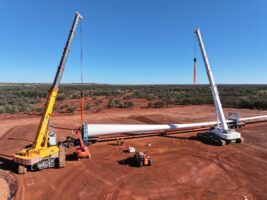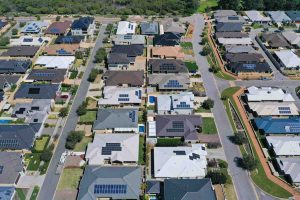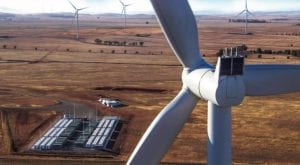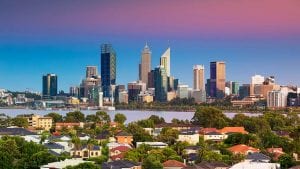Turning Australia’s energy system today into one that can handle the expected influx of electric vehicles (EVs), PV rooftops and big wind and solar requires an equally massive change in the way we plan for it, says Energy Catalyst principal Mark Paterson.
He likens the country’s current energy system to a DC3 aeroplane, a now-vintage aircraft that has been renovated to work today but can’t handle the demands that modern life requires.
“We have inherited a grid from the last century. We have now had some 200 rule changes since the inception of the National Energy Market NEM (in 1998), and every one of them is a major process,” Paterson tells Renew Economy.
“At best that gets us to a DC7. What we need is a Space X launch vehicle.
“We think that we’re getting [Space X] from our incremental changes but they only get us to a DC7. This is one of the largest, most complex systems that humans have ever created, and we are transforming it to do things that the original architects of the system never possibly imagined.”
He says Australia’s energy system – as it is – will not be able to handle the projected four- to five-fold increase in rooftop solar, for example, nor the Australian Energy Market Operator’s (AEMO) step change scenario, which is seen as the most likely forecast for the future.
Paterson says the whole energy system needs a transformation process that can upgrade the entire sector from grid to institutions.
The task is daunting.
“Ultra complex systems need an appropriate or commensurate process of transformational design. We don’t have one. We have 200 rules changes and lots of incremental tweaks but we don’t have a process of transformational design that is informed by the scenarios the industry accepts,” he says.
A whole-of-system approach to modifying Australia’s entire energy system requires that first, the country accepts there is a problem. Then it likely involves a decade of planning that incorporates everything from technology considerations to market design to regulatory design and social licence.
Managing a tidal system
Currently Australia is seeing a massive build out of consumer energy resources (CER), such as rooftop solar, EVs, electric hot water systems and heating and cooling, and distributed energy resources (DER) which also includes community batteries and industrial and commercial electricity generating systems.
It has created a “tidal” system where some areas can now source all of their power needs from rooftop solar and other CER during the day, and at night all of that demand washes back onto the centralised system.
Large scale renewables projects, while taking longer to roll out, are also potential sources of system instability as old technology such as coal fired power plants, which used to handle grid stabilisation, are shuttered.
It’s a radically different system than today’s grid was originally designed for.
Paterson’s view is that we don’t have a process that focuses on the whole system from transmission through to generation down to pool filter systems to ensure the grid remains balanced.
He cites distribution systems as an example, the poles and wires that deliver electricity directly to homes and businesses.
“What (end-to-end thinking) looks like is that right now we have a discussion with regard to distribution system operation, or DSO models,” Paterson says.
“The reason we need to think about DSO models is each distribution system in itself needs to have the function of a system operator that is managing the dynamics within the system, because it’s no longer just demand side, it’s a supply and demand side.
“The DSO needs to be able to manage those dynamics but also… engage with and interact with [system operator] AEMO as a whole. So each distribution system becomes its own balancing area.”
The first phase of research is done
If jurisdictions such as the UK, the European Union, and even the US state of New York are ahead of Australia in terms of transformation, significant work has already been done here.
A review by Race to 2030 shows that at least 182 trials, demonstrations or studies have already been undertaken in Australia.
It found that these focus on how to integrate CER and DER into the existing system, but also points towards the next phase of research that must be done.
“This report has examined almost 200 Australian research studies, trials and demonstrations – a total of almost a billion dollars of research,” says race for 2030 CEO Dr Bill Lilley, co-author of the report alongside Paterson.
“It also highlights that a growing proportion of Australia’s Consumer Energy Resources (CER/DER) will not be fully harnessed if investments in the underpinning integrated systems needed to unleash their full system-level value are not made.”
In June, Australia’s state and federal energy ministers agreed to develop a national roadmap for CER and to look at a national approach to the rules governing assets like rooftop solar, home battery storage and electric vehicles, but this is still a piecemeal approach to one part of the system, according to the intent of the report.
The report highlights the work done, but the downside is none of the trials has been integrated with any of the others, Paterson says.
“The upside is that for the next major phase of research is that we can actually take a much more whole system approach to CER and DER research,” he says.
“There is no silver bullet. What we need is silver buckshot.”










